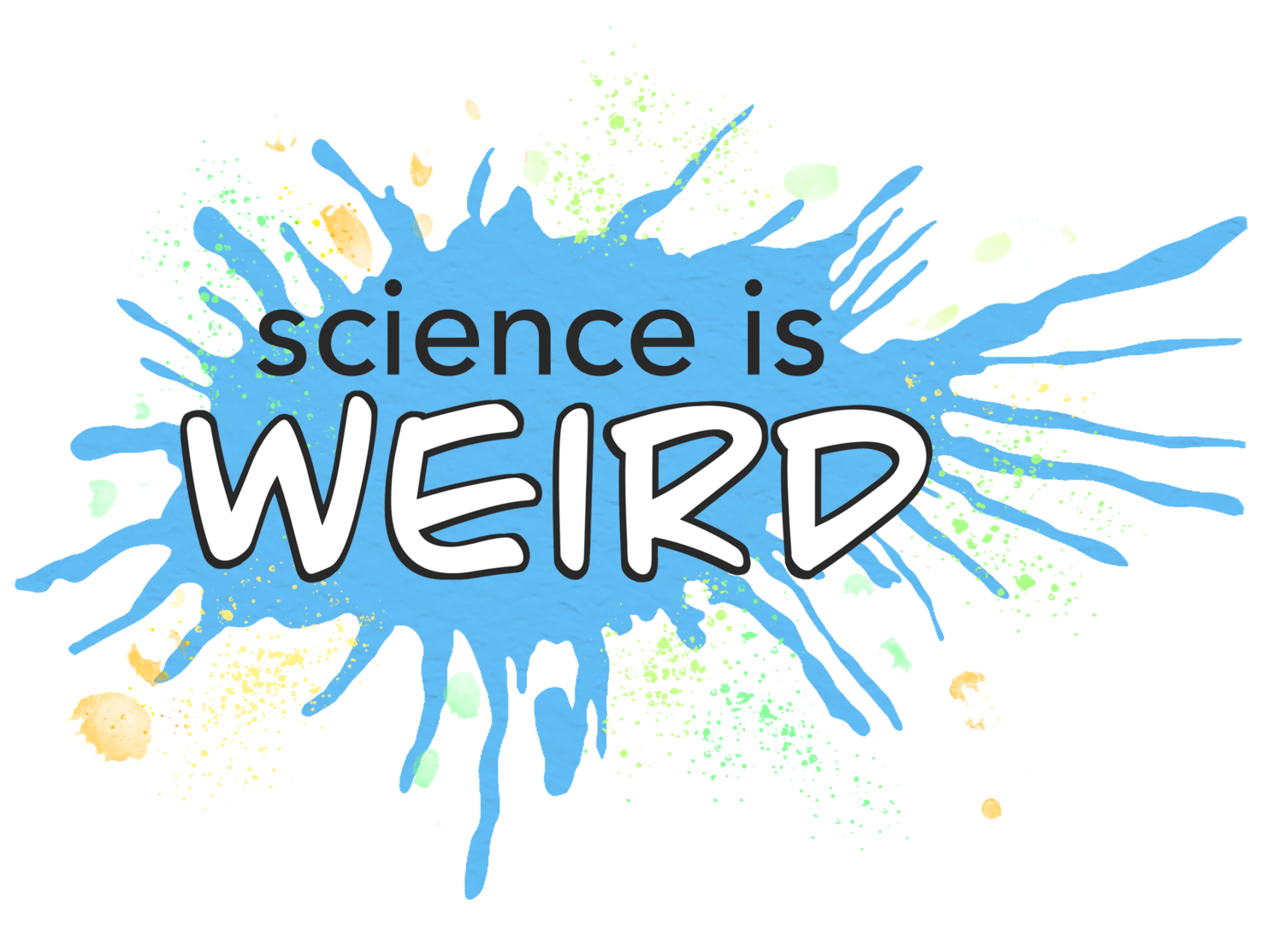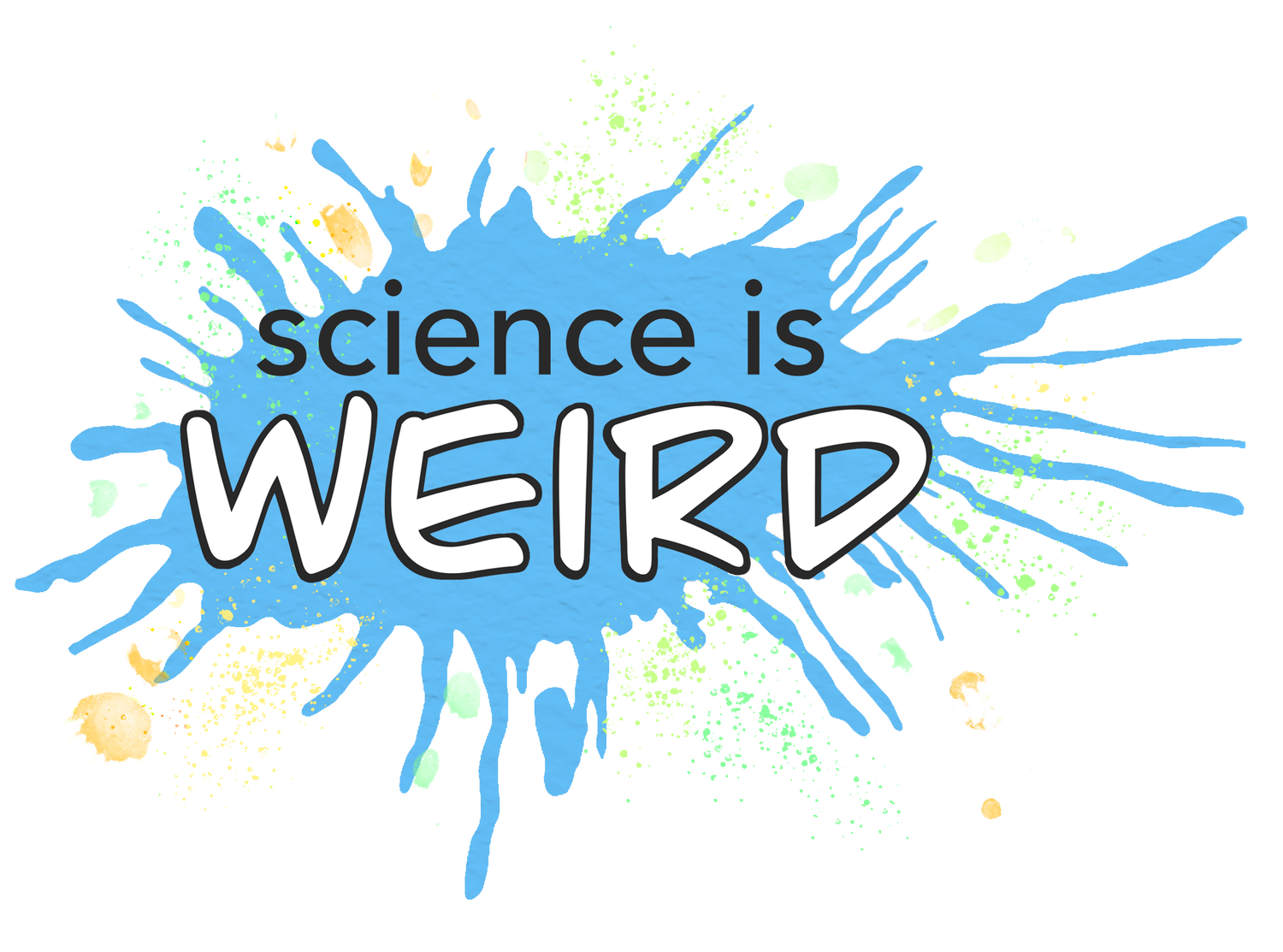Our secret origin
A note from Brandon
As the founder of Science is WEIRD, I probably should hide the fact that I have virtually no formal training in science.
(Whoops.)
Does this worry you? Alarm you? Make your finger itchy for your browser’s “back” button?
If so, that makes sense.
But it turns out that my non-traditional background is the reason Science is WEIRD works. So strap in, and listen to our company’s secret origin story!
(Or, y’know, you can hit the back button, and forget you ever saw this. Either works.)
“We love science that’s simple without being dumbed down.”
A shiny childhood
My childhood was marked by my undiagnosed ADHD. And strangely, this was a wonderful thing.
I was a curious kid, and needed more intellectual stimulation than my school could give me. I read everything I could get my hands on. We’d return from our twice-monthly trips to the library lugging bag after bag of books. I never was more than five feet away from a good book.
This got… problematic. My parents set rules:
no reading at the dinner table
bring no more than three books to grandma’s
They were about almost every topic you can imagine — anything shiny:
history
philosophy
geography
music
art
(Also, so much Calvin & Hobbes.)
Every topic, except one: I didn’t read much science.
Oh, I was into dinosaurs. And fighter jets. And for a couple years, I developed an obsession with cryptozoology — especially the question of whether the Loch Ness Monster is real. (Spoiler: alas, she’s not.)
But real science? Systematic science? Protons and the periodic table and stuff like that? I couldn’t get into it. Science left me cold.
School days
It’s remarkable how little science I learned in school.
This wasn’t even because I had bad teachers. But the science I learned wasn’t shiny, and it didn’t stick. (With one exception… but that’s a story for another day.)
In high school, I learned about classical homeschooling, and dropped out my junior year to homeschool myself… only to find out how lazy I was without someone else’s guidance! I taught myself physics, and forgot all of it. I taught myself ancient Greek, and forgot all of it.
They weren’t shiny.
College
Strangely, the one thing that paid off about my year of homeschooling was studying for the SAT.
The SAT — America’s favorite college entrance exam! — is a famously long and dull test. I happened to pick up a prep book, and grew addicted to working on practice problems. They were short, challenging, and pointless — perfect for my ADHD brain.
But it paid off: when I took the test, I got a 1590 out of 1600. That was good enough to get me a full scholarship to Arizona State University. ASU is famously one of America’s biggest party schools, but it’s also home to the Barrett Honors College — one of the five best honors colleges in the country.
What should one do with a free ride? I had, frankly, no idea what I was doing — no one in my family had gone to a four-year college before. I had a brilliant strategy for leveraging my amazing opportunity into a career:
take whatever classes were shiniest
think about career options after I graduate
I gobbled up courses in the humanities — philosophy, political science, literature, law — and finally graduated summa cum laude holding one B.A. in history, and another in religious studies.
What does one do with those?
“Teaching experience”, if you can call it that
What I chose to do, of course, was grab the shiniest opportunities I found.
I had already discovered that I loved teaching… but I didn’t have a teaching degree. I couldn’t work at a public school, so I connected with my local homeschool community and offered to teach classes to high schoolers.
I began by teaching European history — a traditional class. But soon I became obsessed with a simple question: what content most powerfully changes lives? I needed to experiment, so I began to create new courses:
moral economics
world religions & worldviews
dueling American histories
philosophy of YA literature
happiness
the future
evil
I also taught test prep, which gave me a different challenge. In test prep (like the SAT, ACT, or GRE) the content is already set; the challenge is teaching it quickly and powerfully.
Again, I became obsessed with a simple question: how can we help kids really master skills? To get to the bottom of this, I taught myself cognitive psychology, and ended up creating a company that helped students with ADHD weaponize their particular type of mind.
A random book
I realized that my different interests were coming together — I was obsessed with education. So I got a master’s degree in educational leadership from one of America’s top-ranked ed schools: the University of Washington.
There are degree programs that change a person, that open your mind and help you make sense of the world. For me, the University of Washington’s ed school was not that program. But one thing happened there that changed everything.
It was late in the evening, and I was on the ugly third floor of the academic library, in the “educational history” section. I was there to look for a certain book, and wasn’t finding it. I came across a different book with an interesting title: Getting it Wrong from the Beginning.
I thought, “well this looks refreshing.”
The author was Kieran Egan. In the book he argued that educational thinkers of all philosophies had been getting the basic ideas of schooling wrong since the early 1900s.
I write about Egan elsewhere on the site, and have led a five-workshop series exploring his ideas. Here I’ll just note a few of his basic arguments:
Thinking builds on feeling.
Understanding builds on emotions.
To help someone learn something, show them how it’s interesting.
Everything in the world is interesting.
Anyone can learn almost anything if you first help them fall in love with it.
In other words: shininess matters!
I was hooked.
Science, science, science!
But let’s get back to science.
Back in college, I had kept up my old practice of avoiding science classes. (I took just the bare minimum I needed to graduate — two.)
But then, as soon as I graduated, a wonderful thing happened — or, two wonderful things.
First I stumbled across Natalie Angier’s book The Canon: A Whirligig Tour through the Beautiful Basics of Science. The book lays out the fundamental ideas of each level of science — physics, chemistry, microbiology, and so on. My wife and I spent much of our honeymoon reading parts of it aloud to each other.
Her basic thesis is simple:
Atoms make molecules.
Molecules make cells.
Cells make us.
Then I found Bill Bryson’s A Short History of Nearly Everything. His book tells the stories of how we came to understand much of modern science. Kristin and I listened to the audiobook as we drove through Arizona, California, and Oregon, as we moved ourselves to Seattle.
His basic idea is simple, too:
Everything we know in science came from the hopes and fears of real people.
Up ’til then, I had focused on understanding humanity. But in just two books, I could start understanding how human beings emerged from the 13-billion-year story of the Universe, and how our understanding of the Universe emerged from human beings.
Suddenly the world began to make sense. Not only that, it was shiny.
I was hooked.
Into the classroom
I was hungry to show everyone how amazing science was. But how to do it?
My wife and I opened up a weekend enrichment program in our apartment. We called it “Young Philosophers”, and taught elementary schoolers science, philosophy, history, and cooking.
Then we extended it into a three-day-a-week homeschooling program. We called it “Leonardo”, and set our goal as helping create Renaissance people.
Then we got hired by a private school in Bellevue, Washington. I became a curriculum architect and classroom teacher, charged with creating a whole new curriculum for their upper elementary program to help kids become entrepreneurs.
What a difficult, rewarding challenge.
Some days my teaching succeed brilliantly — the kids learned so much I wanted to cry. Other days I fell flat on my face. Through it all I got better and better at leading kids into the wonder of the world.
The (sudden) birth of Science is WEIRD
And then came covid — suddenly kids throughout the world were out of school. Families were looking for a chance to shake off the slough of boring online classes and re-connect with real learning.
On a lark, I posted on Facebook that I’d be willing to teach a week of lessons online — “Water is Weird”. I said we’d run the class if we got ten students. We got nearly thirty. And a lot of the kids loved it… and I did, too.
So we took the plunge.
We evolved fast. In the first week, we evolved our signature “finger code” for speaking. In the second week, we realized that the core of each lesson needed to be a riddle, wrapped in a game.
Over the next few months, we realized that we could teach all of the sciences like this, and ordered them according to the tower, from the atoms on up.
Back to the future present
Since then, Science is WEIRD has helped (and hundreds) of kids fall in love with this shiny, shiny world.
We’ve hired Amy our science advisor, to make sure that what we were teaching is as accurate as possible — and more accurate than most science classes are able to be!
Each year we’re expanding into new fields — close reading, poetry, history…
And now we’re launching our six-year plan, in which we’ll be starting over at the beginning of our science cycle, and connecting them together into something the world has never seen!
In place of a moral
If there’s a moral to this story, it’s “never think ahead, and chase shiny things”.
That’s probably terrible advice for most people! It does, however, describe us. Science is WEIRD is the result of a random walk through curiosity. It’s helped by the fact that I came late to loving science — that I developed my intellectual abilities elsewhere, and can remember the wonder I felt when first understanding the fundamentals… because they happened recently!
Science is WEIRD is what you get when you mix together
an obsession with how learning really works
trial-and-error experiments among students from elementary school to college
hundreds of great books
untutored wonder
We get to spark in kids across the world the same thrill that I still get when I reflect on the fundamental, shiniest concepts of science.


